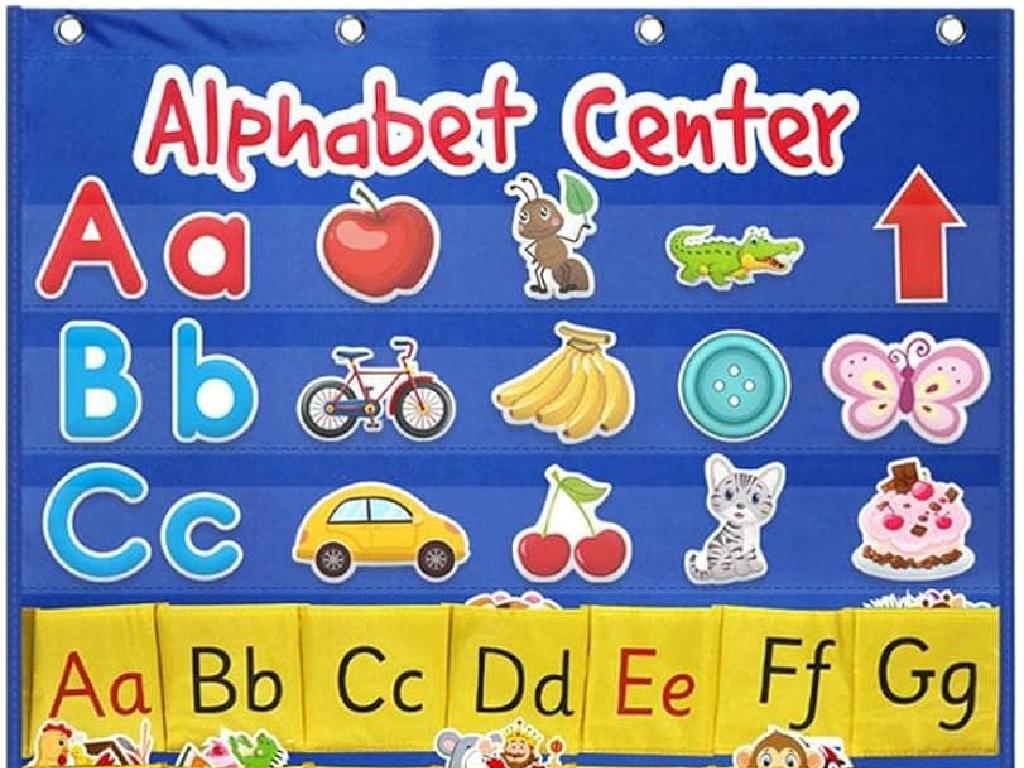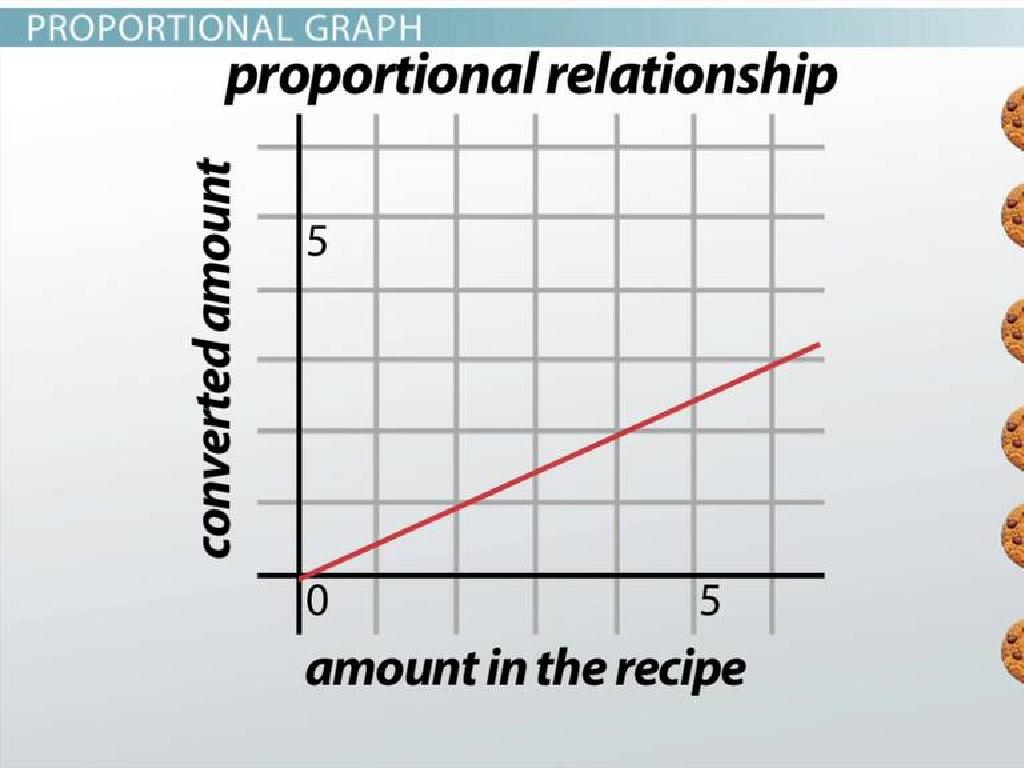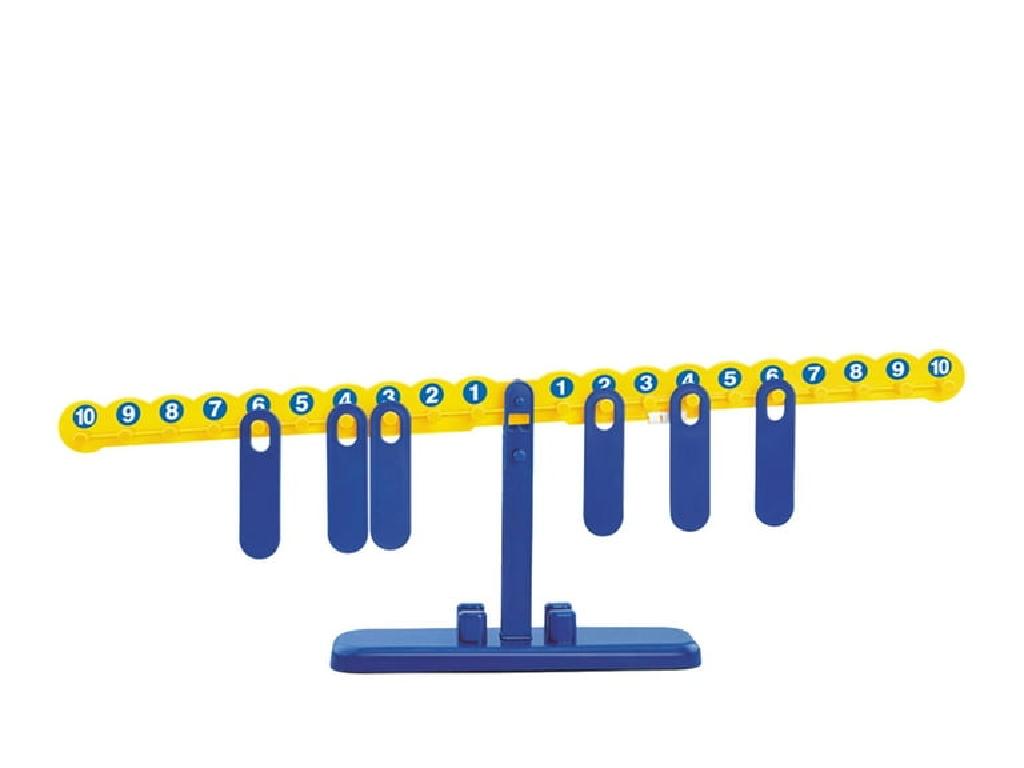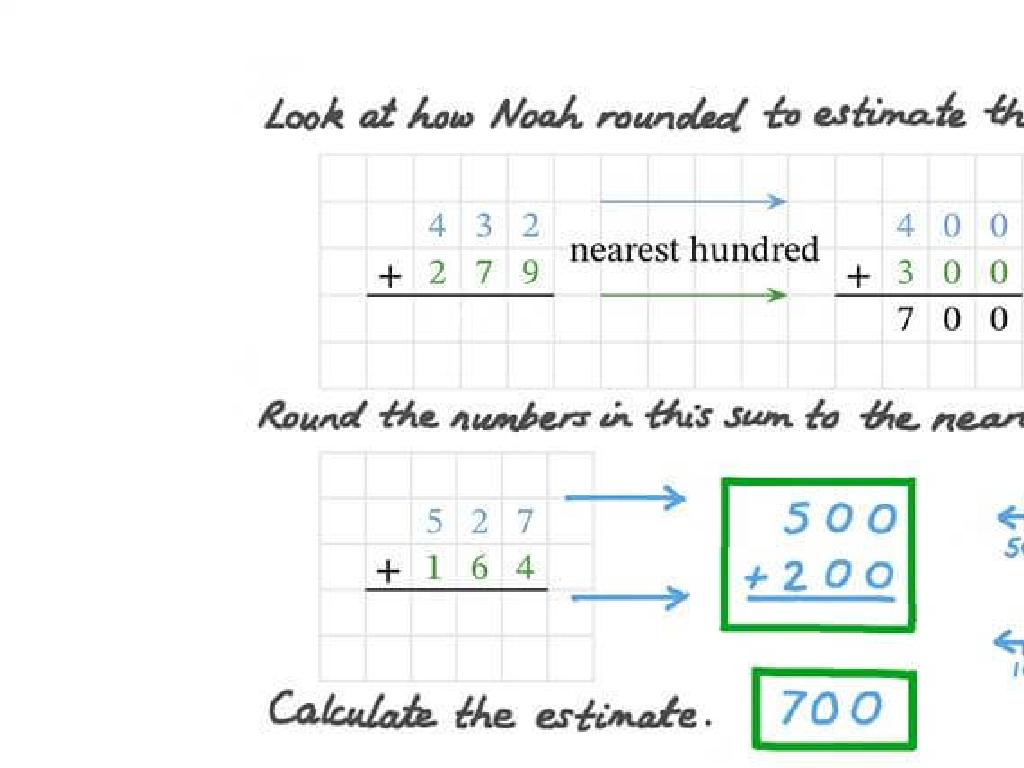Subtraction Sentences Up To 10 - Which Model Matches?
Subject: Math
Grade: Kindergarten
Topic: Understand Subtraction Up To 10
Please LOG IN to download the presentation. Access is available to registered users only.
View More Content
Welcome to Subtraction!
– Learning to take away
– Subtraction is sharing
– Imagine giving some of your toys to friends
– Subtract numbers up to 10
– How many are left if we take away some?
– Match models to sentences
– Use pictures to find the answer
|
This slide introduces the concept of subtraction to Kindergarten students by relating it to the familiar activity of sharing with friends. Emphasize that subtraction is simply the process of taking away from a group or number. Use concrete examples like toys or snacks to illustrate this point. Encourage the students to think about what happens when they have a certain number of items and they give some away. How many items are left? Introduce the concept of subtraction sentences, such as 5 – 2 = 3, and explain that we can use pictures or models to represent these problems. For example, draw 5 circles, cross out 2, and see how many are left. This visual representation will help them understand the concept of subtraction. Prepare to have several examples and possibly a hands-on activity where students can physically remove items and count what remains.
What is Subtraction?
– Subtraction means taking away
– Example with apples
– If you start with 5 apples and give 2 away, how many are left?
– Counting what’s left
– Use fingers to count the remaining apples
– Practice with real objects
– Try subtracting using toys or snacks
|
This slide introduces the basic concept of subtraction to Kindergarten students. Subtraction is explained as the process of taking something away from a group. Use a simple and relatable example, such as having a certain number of apples and giving some away, to illustrate this concept. Encourage the students to use their fingers to count how many items are left after some are taken away. This tactile approach helps solidify the concept in young minds. As a class activity, you can use real objects like toys or snacks to practice subtraction, making the learning experience more engaging and concrete. The goal is to ensure students can understand and apply the concept of subtraction in a practical and interactive way.
Learning Subtraction: Sentences Up to 10
– Understand subtraction sentences
– Recognize the minus sign (-)
– The minus sign tells us to subtract
– Example: 5 – 2 = 3
– Taking 2 away from 5 leaves us with 3
– Subtraction means taking away
– Imagine having 5 apples and 2 are taken away
|
This slide introduces the concept of subtraction to Kindergarten students using simple subtraction sentences. Start by explaining that subtraction is when we take some away from a larger group. Show them the minus sign and explain that it is used to indicate subtraction. Use the example 5 – 2 = 3 to illustrate this concept, and explain that if we start with 5 items and take 2 away, we are left with 3. Use tangible examples like apples or toys to make it more relatable. Encourage the students to use their fingers or objects to practice subtracting numbers up to 10. The goal is for students to understand the basic concept of subtraction and recognize subtraction sentences.
Matching Models to Subtraction Sentences
– Pictures aid in subtraction
– Visuals like apples being taken away help us understand subtraction.
– Each image corresponds to a sentence
– For example, 5 apples – 2 apples taken away = 3 apples left.
– Matching activity
– We’ll work together to connect pictures with the right subtraction facts.
|
This slide introduces the concept of using visual aids to help Kindergarten students understand subtraction. By associating pictures with subtraction sentences, children can more easily grasp the concept of ‘taking away.’ Show examples of simple subtraction problems using images, such as a group of apples with some being removed, and ask the students to match these images to the correct subtraction sentences. Encourage participation by having students come up to the board to make matches. Prepare a variety of images and corresponding sentences for the activity to cater to different learning paces and ensure that every student has the opportunity to engage with the material.
Let’s Practice Subtraction!
– Observe the picture closely
– Tell me the subtraction sentence
– Look at the picture and create a sentence like ‘5 apples – 2 apples = 3 apples’
– Count each item carefully
– Make sure to count all items before subtracting
– Use fingers for help
– Hold up fingers and put some down to subtract
|
This slide is designed for a hands-on activity to practice subtraction with visual aids. Show the students a picture with a certain number of objects and then a smaller number of the same objects. Ask the students to create a subtraction sentence based on what they see. Remind them to count each item in the picture to ensure accuracy. Encourage the use of fingers to represent the objects in the picture, subtracting by putting fingers down to find the answer. This kinesthetic approach helps solidify the concept of subtraction. Be prepared with several pictures depicting different scenarios and numbers up to 10. Allow students to share their sentences and explain their thought process to the class.
Ready, Set, Subtract! – Subtraction Game
– Let’s play a subtraction game
– Observe the model I show you
– Look at the objects and count how many are taken away
– Write the subtraction sentence
– Use numbers to show how many objects we start with and end with
– Ready, set, subtract!
|
This interactive game is designed to help Kindergarten students practice writing subtraction sentences by visually interpreting models. Display a model that shows a certain number of objects, then remove some and ask the students to write the corresponding subtraction sentence. For example, if there are 5 apples and you take away 2, the sentence would be 5 – 2 = 3. Encourage the students to count aloud the starting number of objects and the number that remains after some are taken away. This activity will reinforce their understanding of subtraction as ‘taking away’ and help them relate it to written mathematical expressions. Prepare several examples with different numbers of objects to ensure all students have the opportunity to participate and understand the concept.
Class Activity: Subtraction with Objects
– Each student gets 10 objects
– Listen to the subtraction sentence
– Use objects to subtract
– If I say ’10 minus 2′, take away 2 objects
– Show your answer to the class
– After subtracting, hold up your objects for everyone to see
|
This interactive activity is designed to help Kindergarten students understand the concept of subtraction by using tangible objects such as blocks or counters. Distribute 10 objects to each student. As you call out subtraction sentences, students will physically remove the appropriate number of objects to find the answer. This hands-on approach reinforces the subtraction process and helps students visualize the concept of ‘taking away’. Encourage students to count aloud as they subtract. After completing the subtraction, have them display their remaining objects to the class, fostering a collaborative learning environment. Possible variations of the activity could include using different colored objects for visual differentiation or pairing students to work on subtraction sentences together.
Congratulations Subtraction Stars!
– Celebrating subtraction skills
– Subtraction reveals remaining amounts
– If you have 5 apples and eat 2, subtraction tells us 3 are left.
– You are now subtraction experts
– Keep practicing at home!
– Try subtracting toys, snacks, or crayons to become even better!
|
This slide is meant to celebrate the students’ achievements in learning subtraction up to 10. It’s important to reinforce the concept that subtraction is used to determine the number of items left after some are taken away. Encourage the children by calling them ‘subtraction stars’ and ‘experts’ to boost their confidence. Remind them that practice is key to mastering subtraction and suggest fun ways to practice at home, like with toys or during snack time. This positive reinforcement helps solidify their understanding and enthusiasm for math.






